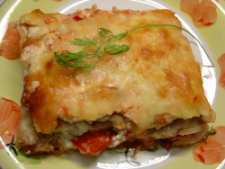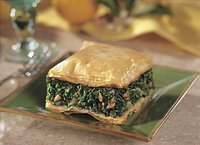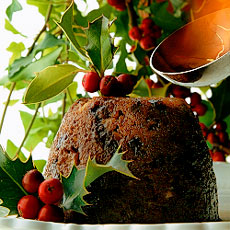
Acholi - Mot ki Yomcwing Botwo Me Mwaka Manyen
Adhola - Wafayo Chamo Mbaga & Bothi Oro Manyeni
Aeka- Keremisi jai be
Afrikaans - Geseende Kerfees en 'n gelukkige nuwe jaar
Ahtna - C'ehwggelnen Dzaenh
Aklanon - Malipayon nga Paskwa ag Mahigugmaon nga Bag-ong Dag-on
Albanian - Gëzuar Krishlindjet Vitin e Ri!
Aleut - Kamgan Ukudigaa
Alsatian - E gueti Wïnâchte & E glecklichs Nej Johr!
Alur - Wafoyo Kado Oro & Wafoyo Tundo Oro manyeni
Alutiiq - Spraasnikam & Amlertut Kiaget!
Amharic - Melkam Yelidet Beaal
Amuesha - Yomprocha' ya' nataya
Angami - U kenei Christmas mu teicie kes a-u sie teicie
kesa-u sie niepete keluo shuzaie we
Apache (Western) - Gozhqq Keshmish
Arabic - I'D Miilad Said ous Sana Saida
Aragonese - Nabidà! & Goyosa Añada benién.
Aramaic - Edo bri'cho o rish d'shato brich'to!
Aranés - Bon Nadau!
Arawak - Aba satho niw jari da'wisida bon
Armenian - Shenoraavor Nor Dari yev Soorp Janunt
Aromanian - Crãciunu hãriosu shi unu anu nãu, bunu!
Araucanian - Wi tripantu in che
Asturian - Bones Navidaes & Gayoleru anu nuevu!
Assamese - Rongaali Bihur xubhessaa lobo
Ata - Maroyan na Pasko woy kaopia-an ng Bag-ong
Tuig kaniyo't langon mga sulod
Aukan - Wi e winsi i wan bun nyun yali
Aymara - Sooma Nawira-ra
Azeri - Tezze Iliniz Yahsi Olsun
Bafut - Mboni Chrismen & Mboni Alooyefee
Bahasa/Malaysia - Selamat Hari Natal dan Tahun Baru
Bamoun - Poket Kristmet & Poket lum mfe
Banen - Enganda ye hiono mes & Hion Hios Hes
Bandang - Mbung Mbung Krismie & Mbung Mbung Ngouh Suiie
Basque - Zorionak eta Urte Berri On!
Bassa - Ngand Nwi Lam & Mwi Lam
Batak Karo - Mejuah-juah Ketuahen Natal
Bemba - Kristu abe nenu muli ino nshiku nkulu ya Mwezi
Belorussian - Winshuyu sa Svyatkami i z Novym godam!
Bengali - Shuvo Baro Din - Shuvo Nabo Barsho
Bhojpuri - Naya Sal Mubarak Ho
Bicolano - Maugmang Capascuhan asin Masaganang Ba-gong Taon!
Bislama - Mi wisim yufala eerywan one gutfala Krismas
& mo wan hapi New Year long
Blaan - Pye duh di kaut Kristo klu munt ug Felemi Fali!
Blackfoot - I'Taamomohkatoyiiksistsikomi
Bohemian/Czech - Prejeme Vam Vesele Vanoce a Stastny novy rok
Brahui - Arkas caik xuda are
Breton - Nedeleg laouen na bloav ezh mat
Bulgarian - Chestita Koleda i Shtastliva Nova Godina
Bulu - Duma e bo'o
Bura - e be Zambe e Usa ma ka Kirisimassu
Catalan - Bon Nadal i feliç any nou!
Cantonese - Seng Dan Fai Lok, Sang Nian Fai Lok
Carib - Sirito kypoton ra'a
Carrier - Zoo dungwel & Soocho nohdzi doghel
Carolinian - Ameseighil ubwutiiwel Layi Luugh me raagh fee
Cebuano - Malipayong Pasko ug Bulahang Bag-ong Tuig!
Chamorro - Filis Pasgua & Filis Anu Nuebo
Chaha Bogem h n mh m & Boxem as nana-h m
Chamba - Wi na ge nyare Su dome Kirismass
Cherokee - Danistayohihv & Aliheli'sdi Itse Udetiyvsadisv
Cheyenne - Hoesenestotse & Aa'e Emona'e
Chichewa - Moni Wa Chikondwelero Cha Kristmasi
Chiga - Mwebare khuhika - Ha Noel
Choctaw - Yukpa, Nitak Hollo Chito
Cornish - Nadelik looan na looan blethen noweth
Corsican - Bon Natale e Bon capu d' annu
Cree - Mitho Makosi Kesikansi
Creek - Afvcke Nettvcakorakko
Creole/Seychelles - Bonn e Erez Ane
Croatian - Sretan Bozic
Dagbani - Ni ti Burunya Chou & Mi ti yuun
Damara/Nama - Khiza
Danish - Glædelig Jul og godt nytår
Dibabawon - Marayaw na Pasko aw Bag-ong Tui g kaniyo tibo na mga soon
Dinka - Miet puou yan dhiedh Banyda tene Yin
Dine/Navajo - Ya'at'eeh Keshmish
Divehi - Ufaaveri aa ahareh
Dschang - Chrismi a lekah Nguo Suieh
Duri - Christmas-e- Shoma Mobarak
Dutch - Vrolijk Kerstfeest en een Gelukkig Nieuwjaar!
Egyptian - Colo sana wintom tiebeen
English - Merry Christmas & Happy New Year
Eritrean - Rehus-Beal-Ledeat
Esperanto - Gajan Kristnaskon & Bonan Novjaron
Estonian - Rõõmsaid Jõulupühi ja Head uut aastat
Éwé - Blunya na wo
Ewondo - Mbemde abog abyali nti! Mbembe Mbu!
Faroese - Gledhilig jól og eydnurikt nýggjár!
Fali - Use d'h Krismass
Farsi - Sal-e no mubarak
Fijian - Me Nomuni na marau ni siga ni sucu dei na yabaki vou
Finnish - Hyvää Joulua or Hauskaa Joulua - 0nnellista uutta vuotta
Flemish - Zalig Kerstfeest en Gelukkig nieuw jaar
French - Joyeux Noël et Bonne Année!
Frisian - Noflike Krystdagen en in protte Lok en Seine yn it Nije Jier!
Friulian - Bon Nadâl e Bon An Gnûf
Fulfulde - Jabbama be salla Kirismati
Gaddang - Mangamgam Bawa a dawun sikua diaw amin
Galician - Bon Nadal e Bo Ani Novo
Gari - !Soalokia God i gotu vasau, mi lao ke ba na
rago vanigira ara dou i matana!
Gciriku - Mfiyawidi yaKrisimisa & Marago ghaMwaka waUpe
Georgian - Gilotsavt Krist'es Shobas & Gilosavt akhal ts'els
German - Fröhliche Weihnachten und ein glückliches Neues Jahr!
Gikuyu - Gia na Thigukuu njega Na MwakaM weru wi Gikeno
Gitskan - Hisgusgitxwsim Ha'niisgats Christ gankl Ama Sii K'uuhl!
Golin - Yesu kule nongwa kaun umaribe ongwa ena mone di mile wai wen milo
Greek - Kala Christougenna Ki'eftihismenos O Kenourios Chronos
Greenlandic - Juullimi Ukiortaassamilu Pilluarit
Guahibo - Pexania Navidadmatacabi piginia pexaniapejanawai paxainaename
Guambiano - Navidadwan Tabig tugagunrrigay & Sru pilawan kasrag utunrrigay
Guarani - Avyaitete ahi ko Tupa ray arape qyrai Yy Kapyryin rira
Guarayu - Imboeteipri tasecoi Tupa i vave! & Ivve ava Tupa
rembiaisu toyuvirecoi turpi oyeaisusa pipe!
Gujarati - Natal ni shub kaamnao & Saal Mubarak
Gwere - Osusuku Omusa & Masuke Omwaka
Gwich'in - Drin tsal zhit shoh ohlii & Drin Choo zhit zhoh ohlii
Han - Drin tsul zhit sho ahlay & Drin Cho zhit sho ahlay
Hausa - Barka da Kirsimatikuma Barka da Sabuwar Shekara!
Hawaiian - Mele Kalikimaka & Hauoli Makahiki Hou
Haya - Waihuka na Noeli & Waihhuka n 'Omwaka
Hebrew - Mo'adim Lesimkha. Shanah Tova
Heiban - Ati kalo gathje uwa gigih
Herero- Okresmesa ombwa Ombura ombe ombwa
Hiligaynon - Malipayon nga paskua & Malipayon Nga Bag-ong tuig
Hindi - Shubh Naya Baras
Holo - Seng-tan khoai-lok!
Hmong - Nyob Zoo Xyoo Tahiab
Hungarian - Kellemes karácsonyi ünnepeket és Boldog újévet!
Hungduan - Maphon au nitungawan. Apo Dios Kituwen baron di toon
Iban - Selamat Ari Krismas enggau Taun Baru
Ibanag - nga Pascua
Icelandic - Gleðileg Jól og Farsaelt Komandi ár!
Igbo - Ekelere m gi maka Keresimesi na ubochi izizi afo ozo
Ikiribati - Te Mauri, Te Raoi ao Te Tabomoa nakoimi nte Kirimati ao te Ririki ae Bou
Ilocano - Naimbag a Pascua ken Naragsac nga Baro nga Tawen!
Imbongu - Gotenga malo Jisasi Karaist
Indonesian - Selamat Hari Natal & Selamat Tahun Baru
Inupiaq - Annaurri Aniruq & Paglaun Ukiutchiaq
Inupiatun - Quvianaq Agaayuniqpak
Iraqi - Idah Saidan Wa Sanah Jadidah
Irish - Nollaig Shona Dhuit
Iroquois - Ojenyunyat Sungwiyadeson homungradon nagwutut & Ojenyunyat osrasay
Italian - Buon Natale e Felice Anno Nuovo
Japanese - Shinnen omedeto. Kurisumasu Omedeto
Javanese - Sugeng Natal lan warsa enggal
Jèrriais - Bouan Noué et Bouanne Année
Kabyle - Assegwas ameggaz
Kadazan - Kotobian Tadau Do Krimas om Toun Vagu
Kahua - Na vagevageha surireua na Kirisimasi ma na harisi naoru
Kala Lagaw Ya - Ngi ngayka Koei trimal Kaz
Kambaata - eman haaro wegga illisholce
Kamba - Ithiwa na Kisimsi Kiseo & Na Mwaka Mweu Museo
Kannada - Hosa Varushada Subhasayagalu
Karelian - Rastawanke Sinun, Uvven Vuvenke Sinun
Kaqchiquel - Dios tik'ujie' avik'in
Kashmiri - Christmas Id Mubarak
Kawalib - Amirnar Krismas Gi
Khasi - Krismas basuk & Snem thymmai basuk
Kinyarwanda - Umunsi Mwiza
Kirundi - Noeli Nziza & Umwaka Mwiza
Kom - Isangle Krismen & Isangle beng i fue
Konkoni - Khushal borit Natalam
Korafe - Keremisi ewewa
Korean Sung Tan Chuk Ha
Kosraean - Tok Tapeng & Engan ya sasu
Koyukon - Denaahto' Hoolaank Dedzaanh Sodeelts'eeyh
Krio - Appi Krismes en Appi Niu Yaa
Kuanua - A Bona Lukara na Kinakava
Kurdish - Seva piroz sahibe u sersala te piroz be
Kwangali - Kerekemisa zongwa & Erago moMumvho gomupe
Kyrghyz - JangI jIlIngIz guttuu bolsun!
Ladin - Bon Nadel y Bon Ann Nuef
Lakota - Wanikiya tonpi wowiyuskin & Omaka teca oiyokipi
Lamnsó - Kisheri ke Kisimen & Vijung ve kiya kefiyki
Lango - Afoyo Chamo Mwake & Apoyo Mwaka Manyeni
Latin - Pax hominibus bonae voluntatis
Latvian - Prieci'gus Ziemsve'tkus un Laimi'gu Jauno Gadu!+
Lausitzian - Wjesole hody a strowe nowe leto
Lebanese - Milad Saeed wa Sanaa Mubarakah
Lithuanian - Linksmu Kaledu ir laimingu Nauju metu
Livonian - Jovi talshpivdi un Vondzist uto aigasto
Lower Tanana - Bet'oxdilt'ayi bedena' ch'exulanhde dranh ninoxudedhet
Lozi - Kilisimasi ya nyakalalo & Silimo se sinca sa tabo
Luganda - Amazalibwa Agesanyu & N'Omwaka Omujaa Ogwemirembe
Luhya - Isuguku Indahi & Nu Muhiga Musha
Luo - Sikuku Mar Higa Kod Mor & Mar Kiga Manyien
Luritja - Wai! Nyuntu Larya?
Luxembourgeois - Schéi Krëschtdeeg an e Schéint Néi Joer
Macedonian - Srekan Bozik I Nova Godina
Madura - Pada salamet sabhala bengko areja
Makassar - Salama' Natal & Selamat Tahun baru
Malagasy - Arahaba tratry ny Krismasy
Mambwe - Kristu aye namwe umu nsikunkulu ino iya Mwezi
Malayan - Selamat Hari Natal
Malayalam - Christumas Mangalangalangal & Puthuvalsara Aashamsakal
Maltese - Nixtieqlek Milied Tajjeb u Sena Tajba
Mandarin - Kung His Hsin Nien bing Chu Shen Tan
Mandobo - Mepiya Pagasaulog sa pagka-otawni Jesus aw maontong kaling Omay!
Mangyan - Mayad paq Pasko kag
Mansaka - Madyaw na Pasko aw malipayong Bag-ong Tuig kamayo, mga lumon
Manx - Nollick ghennal as blein vie noa
Maori - Kia orana e kia manuia rava i teia Kiritimeti e te Mataiti Ou
Marathi - Shub Naya Varsh
Margi - Use aga Kirismassi
Marshallese - Monono ilo raaneoan Nejin & Jeramman ilo iio in ekaal
Mataco-Mataguayo - Lesilatyaj ihi Dios ta i ppule ye, Letamsek ihi wichi ta Dios ikojejthi ta i honat e
Maya/Yucateco - Utzul mank'inal
Medlpa - Enim Mutuiyo!
Meithei - Krismas Hlomum & Kumthar Lawmum
Mingrelian - k'irses mugoxuamant & axal ts'anas mugoxuamant
Mongolian - Zul saryn bolon shine ony mend devshuulye
Monégasque - Festusu Natale e Bona ana noeva
Moro - Nidli pred naborete nano
Moru - Medu amiri ovuru Yesu opi amaro
Muyu - Lip Ki amun aa Natal Kowe
Naasioi - Tampara Kirisimaasi
Naskapi - miywaaitaakun mikusaanor & kiyaa maamiyupiyaakw minuwaach pipuun
Ndjem - Mbeya mbeya Ebiel & Mbeya mbeya mbu
Ndogo - Esimano olyaKalunga gwokombandambanda! & Nombili kombanda yevi maantu e ya hokwa!
Ndonga - Okrismesa iwa & Omude Mupe wa Punikwa
Nepali - krist Yesu Ko Shuva Janma Utsav Ko Upalaxhma Hardik Shuva & Naya Barsa Ko harkik Shuvakamana
Newari - Nhu Da Ya Vintuna
Nii - Nim Ono
Niuean - Monuina a Aho Kilisimasi mo e Tau Foou
Norweigan/Nynorsk - Eg ynskjer hermed Dykk alle ein God Jul og Godt Nyttår
Norweigan/Bokmål - God Jul og Godt Nyttår
Notu/Ewage - Keremisi dave be
Nyanja - Kristu akhale ndi inu munyengo ino ya Christmas
Nyankore Mukhulukhe Omwaka
Occitan - Polit nadal e bona annada
Ojibwe (Chippewa) - Niibaa' anami'egiizhigad & Aabita Biboon
Oneida - Wanto'wan amp; Hoyan
Oriya - Sukhamaya christmass ebang khusibhara naba barsa
Orokaiva - Keremisi javotoho
Oromo - baga wagaa hara isinin gaye
Palauan - Ungil Kurismas
Pompangan - Malugud Pascu at saca Masayang Bayung Banua!
Pangasinan - Maabig ya pasko & Maliket ya balon taon
Papiamento - Bon Pasco i Feliz Aña Nobo
Pashto - De Christmas akhtar de bakhtawar au newai kal de mubarak sha.
Pennsylvania German - En frehlicher Grischtdaag unen hallich Nei Yaahr!
Pohnpeian - Peren en Krismas & Peren en Parakapw
Polish - Wesolych Swiat i Szczesliwego Nowego Roku.
Portuguese - Boas Festas e um feliz Ano Novo
Punjabi - Nave sal di mubaraka
Pashto - Christmas Aao Ne-way Kaal Mo Mobarak Sha
Q'anjob'al - chi woche swatx'ilal hak'ul yet yalji Komami'
Quechua - Sumaj kausay kachun Navidad ch'sisipi & Mosoi Watapi sumaj kausay kachun
Quiche' - Dioa kkje' awuk'
Rapa-Nui - Mata-Ki-Te-Rangi & Te-Pito-O-Te-Henua
Rarotongan - Kia akakakaia te Atua i runga i te rangi Teitei,
e ei au to to teianei ao, e kia aroaia mai te tangata nei.
Rengma - Anu keghi Christmas nu amapi kethighi wa salam pi nthu chupenle
Rheto-Romance - Bella Festas daz Nadal ed in Ventiravel Onn Nov
Romani - Bachtalo krecunu Thaj Bachtalo Nevo Bers
Romanian - Craciun fericit si un An Nou fericit!
Rongmei - Mei kathui nata neila mei Khrisrmas akhatni gai mei tingkum kathan tu-na arew we
Roviana - Mami tataru Kirisimasi koa gamu doduru meke qetu qetu vuaheni vaqura ia
Russian - Pozdrevlyayu s prazdnikom Rozhdestva i s Novim Godom
Salar - YangI yilingiz gotlI bulsIn!
Sambal - Maligayang Pasko at Masayang Ba-yon Taon!
Sámi - Buorit Juovllat ja Buorre Oddajahki
Saamia - Muwule Omwaka Enjaya
Samoan - Ia manuia le Kilisimasi ma le tausaga fou
Sango -Gloire na Nzapa na ndouzou aho kouè, Na siriri na ndo sessé na popo ti ajo so amou nguia na Lo.
Santali - Raska nawa Serma
Saramaccan - Nuan wan suti jai o!
Sardinian - Bonu nadale e prosperu annu nou
Scots Gaelic - Nollaig chridheil agus Bliadhna mhath ur!
Secoya -Sihuanu'u Ejaerepa aide'ose'ere & Sihuana'u huaje ametecahue
Semandang - Selemat gawai Natal
Seneca - a:o'-e:sad yos-ha:-se:'
Serbian - Sretan Bozic. Vesela Nova Godine
Sicilian - Bon Natali e Prosperu Annu Novu !
Sinhala - Subha nath thalak Vewa. Subha Aluth Awrudhak Vewa
Slavey - Teyatie Gonezu
Soga - Mwisuka Sekukulu
Songe - Kutandika kua Yesu kuibuwa! & Kipua kipia kibuwa!
Sorani - Newroz le to Piroz be
Sorbian - Wjesole hody a strowe Nowe leto.
Somali - ciid wanaagsan iyo sanad cusub oo fiican.
Sotho/North - Mahlatsi a Matswalo a Morena le Ngwaga o Moswa
Sotho/South - Litakalerso Tse Monate Tsa Kere Semese Le Mahlohonolo a Selemo Se Secha
Slovakian - Vesele Vianoce a stastny novy rok
Slovene - Vesele bozicne praznike in srecno novo leto
Sorbian - Wjesole hody a strowe Nowe leto
Spanish - Feliz Navidad y Próspero Año Nuevo
Sranan - Wan switi kresneti nanga wan bun nyun yari!
Subanen - Piak Pasko Pu Piag Bago Tawn
Sudanese - Wilujeng Natal Sareng Warsa Enggal
Suena - Kerisimasi kokopai
Surigaonon - Malipayon na pasko sanan bag-on tuig!
Swahili - ºKrismas Njema Na Heri Za Mwaka Mpyaº
Swedish - God Jul och Gott Nytt År
Tagalog - Maligayang Pasko at Manigong Bagong Taon
Tahitian - Ia ora i te Noere e ia ora na i te matahiti 'api
Tagakaulu - Madyaw Pagsalog sa Pagka-otaw ni Jesus & Aw mauntong na bago Umay!
Tala Andig - Maayad ha pasko daw bag-ong tuig
Tamazight - Asseggwas Ameggaz
Tarifit - Asuggas Asa'di
Tamil - Nathar Puthu Varuda Valthukkal
Tanaina - Natukda Nuuphaa
Tayal - Pqaquasta ta. Pquasta hentang na Jesu
Telugu - Christmas Shubhakaankshalu & Nootana Samvatchara Subhakanshalu
Thai - Suksan Wan Christmas lae Sawadee Pee Mai
Tlingit - Xristos Khuwdziti kax sh kaxtoolxetl
Tok Pisin - Meri Krismas & Hepi Nu Yia
Tokelau - Ke whakamanuia te Kirihimahi & Tauhaga Fou fiafia
Tonga - Kristo abe anduwe muciindo ca Christmas
Tongan - Kilisimasi Fiefia & Ta'u fo'ou monu ia
Toraja - Salama' Natal & Selama' taun baru
Trukese - Neekirissimas annim oo iyer seefe feyiyeech!
Tshiluba - Diledibua dilenga dia Mfumu - Tshidimu tshipia - tshipia th silenga
Tswana - Keresemose o monate le masego a ngwaga o montsha
Tubetube - Yayaliyaya Yesu sikabi kaiwena
Tumbuka - Kristu wabe namwe munyengo ya Christmas
Turkish - Noeliniz Ve Yeni Yiliniz Kutlu Olsun
Tutchone/Northern - Ut'ohudinch'i Hulin Dzenu & Eyum nan ek'an nenatth'at danji te yesohuthin ch'e hadaatle sh'o
Ukrainian - Veseloho Vam Rizdva i Shchastlyvoho Novoho Roku!
Umbundu - Natale, Natale, Oyo O Natale & Eteke Lio Bowano, Illimo Ciwa
Urdu - Naya Saal Mubarak Ho
Uvean - Italo fa ide tau fou nei eseke
Uyghur - YanghI yiling ahlqIs bolgey!
Valencian - Bon Nadal i millor any nou
Vespi - Rastvoidenke i Udenke Vodenke
Vietnamese - Chuc Mung Giang Sinh - Chuc Mung Tan Nien
Votian - Yvaa rashtagoa! & Yvaa uutta vootta!
Waray-Waray - Maupay nga Pasko ngan Mainuswagon nga Bag-o nga Tuig!
Warlpiri - Miri Kirijimiji & Nyuntunpa Ngurrju nyayirni yapa
Welsh - Nadolig LLawen a Blwyddyn Newydd Dda
Yup'ik/Central - Alussistuaqegcikici
Yupik/Siberian - Quyanalghii Kuusma & Quyangalleq Nutaghamun Aymiqulleq
Xhosa - Siniqwenelela Ikrisimesi EmnandI Nonyaka Omtsha Ozele Iintsikelelo Namathamsanqa
Yiddish - Gute Vaynakhtn un a Gut Nay Yor
Yoruba - E ku odun, e hu iye' dun!
Zarma - Barka da Issa hay-yan hann & Barka da djiri barey-yan
Zaza - Newroz'a tu Piroz be
Zia - Kerisimasi wosewa
Zime - El ma ka bar vra aso vei Lu & El ma ka kim na mireu
Zulu - Sinifesela Ukhisimusi Omuhle Nonyaka Omusha Onempumelelo























.jpg)


























